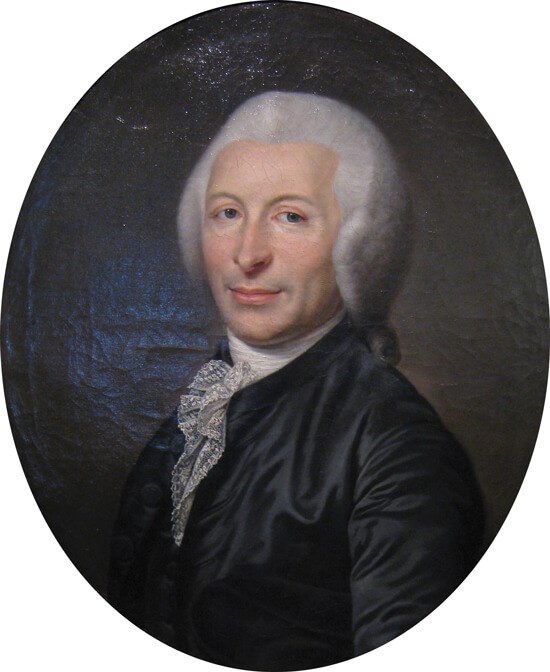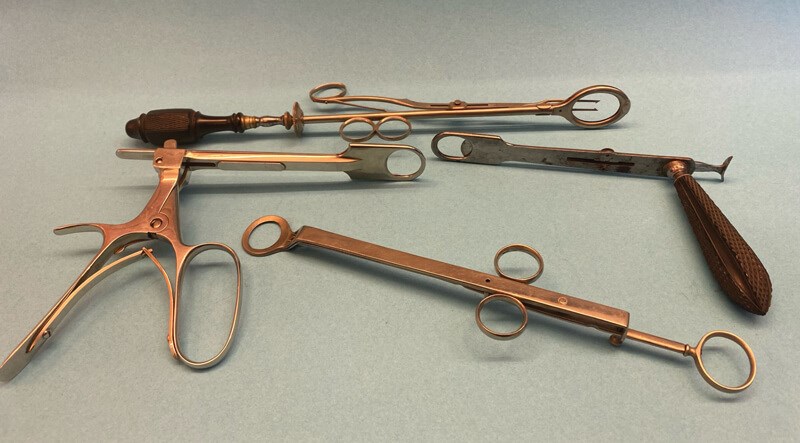
Joseph‑Ignace Guillotin.
The politician and physician Joseph-Ignace Guillotin (1738-1814) was so disgusted by brutal head and shoulder injuries sustained in ‘failed attempts’ by drunken axe-wielding executioners during the French Revolution that he and surgeon Antoine Louis (1723-1792) advocated not only that all those sentenced to death should be executed in the same way, but designed a new ‘improved’ painless beheading device [1].
Previously only the nobles were granted the ‘privilege’ of decapitation by the sword. This appliance was first called a ‘louisette’ but later became known as a ‘guillotine’.
As long ago as 1587, a mechanical method of execution with a falling axe-head was described. It was introduced in Halifax, Yorkshire as punishment for the stealing of cloth. Evidently “felons were instantly beheaded with an engine” [2]. The practice ceased in 1650. The felons of Halifax rejoiced.
Doctor Guillotin would certainly be familiar with the principle of surgical cutting devices in which a blade was guided in a frame. The celebrated French military surgeon, Ambroise Paré (1510-1590), the German Fabricius Hildanus (1560-1634), Ulm’s Scultetus (1595-1645) and Lorenz Heister (1683-1758) described instruments that only much later became designated as ‘guillotine-like’. These had been primarily used to amputate the enlarged uvula.
Then in 1828, the ‘father of American surgery,’ Philip Syng Physick (1768-1837) developed a similar type of instrument for tonsillectomy in which the opening radius of the cutting device corresponded to the size of the tonsil. Over the years, various modifications were made by Velpeau, Fahnestock, Mathieu and Mackenzie. Whether or not the cutting blade needed to be pulled from back to front or whether it must be pushed from front to back is still a topic for debate. The Mackenzie tonsillotome (1880) was equipped with two cutting heads to perform the operation of synchronous bilateral tonsillotomy in just a few seconds [3].

Tonsillotomes: Fahnestock, Physick, Matieu, Sluder.
Greenfield Sluder (1865-1928) from St Louis set the cornerstone in the development of tonsillotomes [4]. After two trips to Europe in 1896 and 1900 visiting colleagues in Vienna, Berlin and London, he became professor and head of the rhinolaryngology department at his old medical school at Washington University in 1906.
In 1911 Sluder wrote an intriguing article entitled ‘A Method of Tonsillectomy by Means of a Guillotine and the Alveolar Eminence of the Mandible’. He had basically modified Physick’s guillotine to a much more stable instrument with a stronger grip and an oval fenestra. He suggested that the bulge of the ‘eminentia alveolaris’ of the mandible “stuffs the tonsil through the aperture” bringing the blade behind the tonsil capsule when cutting. In practice however this almost always resulted in the loss of the anterior palate arch. Apparently, the operation took only five to eight seconds.
Both Guillotin and Sluder were physicians. Technically, both their inventions required the same thing: a sharp metal cutting edge guided in a stable frame. The aperture in each case had to be adapted to the object to be separated: for Guillotin it was the entire head, for Sluder it was just the tonsil.I must acknowledge the help of John Riddington Young in putting this article into the King’s English.
References
1. Joseph-Ignace Guillotin.
https://de.wikipedia.org/wiki/
Joseph-Ignace_Guillotin
Last accessed September 2023.
2. Bennett JDC, Young JR. Offbeat Otolaryngology. Stuttgart, Germany; Thieme; 2001:101-6
3. Mackenzie M. A Manual of Diseases of the Throat and Nose. London, UK; J & A Churchill; 1880-1884.
4. Sluder, G. A Method of Tonsillectomy by means of a Guillotine and the Alveolar Eminence of the Mandible. Pamphlet; 1911.




